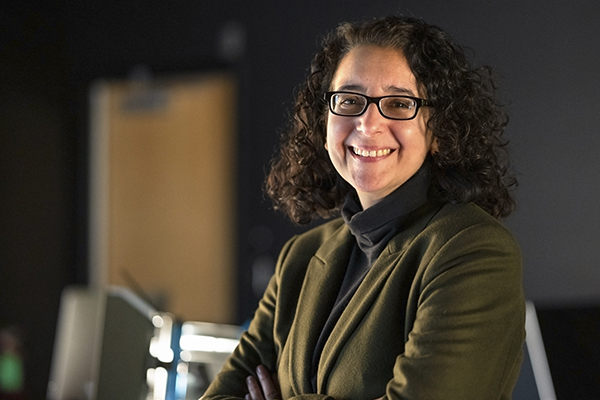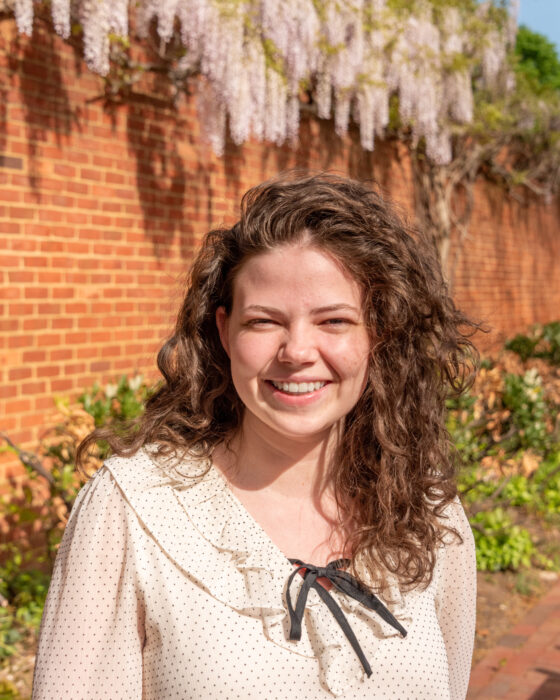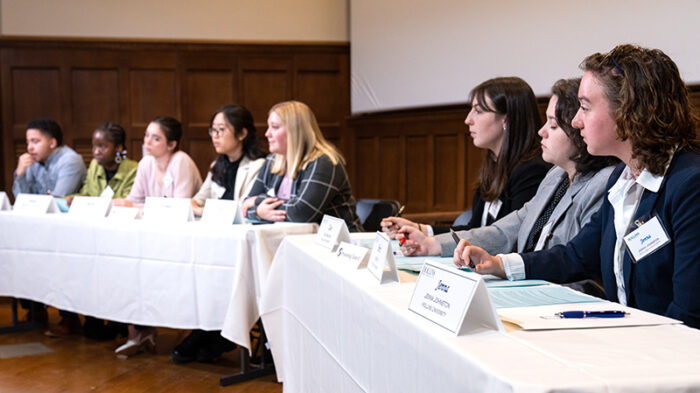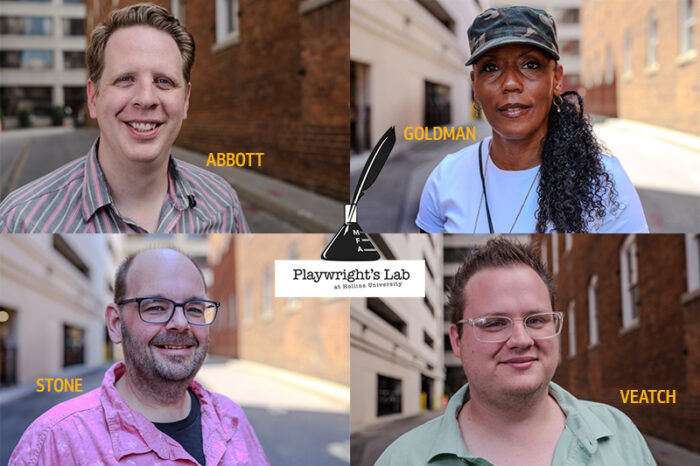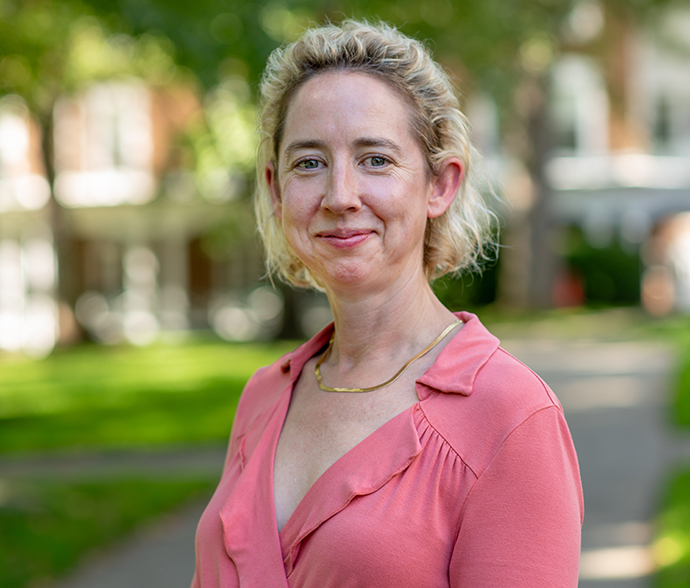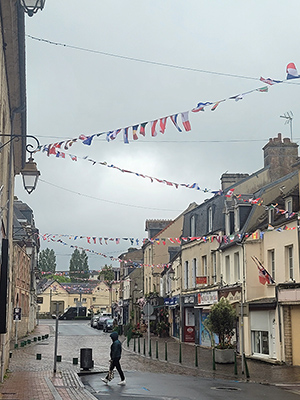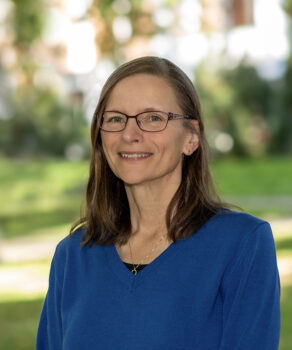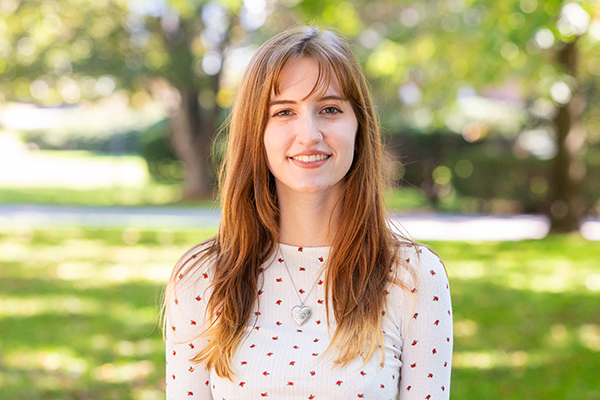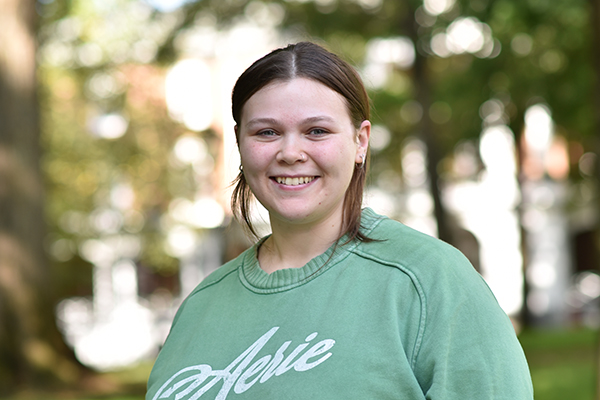Pursuing scholarly or creative work while ensuring a meaningful experience for students in the classroom is a daily challenge for every college professor. Associate Professor of Film Amy Gerber-Stroh, who chairs the film department at Hollins and codirects the university’s graduate programs in screenwriting and film studies, has accrued 40 years as a professional filmmaker and nearly three decades teaching film in higher education. For her, immersion in both vocations is the key to success and fulfillment.
“Teaching learners of all ages and abilities has been really rewarding. It has made me a better filmmaker, much more so than if I were balancing filmmaking and [the demands of] Hollywood,” she said.
Gerber-Stroh laid her foundations at Los Angeles’ CalArts (California Institute of the Arts), which was founded by Walt Disney. Alumni including directors Tim Burton and Sofia Coppola set high standards. “It’s a school that shaped me in terms of experimental directing and trying different things from an artist’s point of view rather than a consumer point of view. A lot of the other film schools in L.A. are really more geared toward the Hollywood box office.”
After CalArts, Gerber-Stroh admits she “got sucked into Hollywood and worked on a lot of strange stuff, mostly as a casting associate.” Her mainstream movie credits range from City Slickers II: The Legend of Curly’s Gold (1994), Angels in the Outfield (1994), and Tank Girl (1995) to Goldeneye (1995), The Craft (1996), and The Mask of Zorro (1998). Fortunately for Gerber-Stroh, casting work was just a day job. “At the same time, I was making a lot of experimental art films, and I was also working at the Los Angeles County Museum of Art. That was a great gig because I was able to make films about painters and sculptors. It honed my sensibilities and drove me artistically.”
In 2000, Gerber-Stroh launched her own production company, FlatCoatFilms, and began producing her own short films, documentary features, and animation projects. After joining the Hollins faculty in 2007, her task was to balance filmmaking with her new passion for teaching.
“It takes a long, long time to make films. I sort of rotate between longer and shorter pieces,” she explained. “Shorts can take a couple of years. Feature-length projects for independent filmmakers take anywhere from four to eight years. The reason is, if you’re not backed by a major production company or studio, the money is trickling in. You’re getting grant money, maybe you’re getting people who are investing in your films, or you’re getting GoFundMe campaigns going. Thanks to Hollins, I received seed money for my current project.”
Gerber-Stroh has addressed a variety of subjects in her films. Public Memory (2004) explores the meanings and motivations of American memorials. The Truth About Trees: A Natural and Human History (2015) is a three-part documentary series for PBS made in collaboration with the James Agee Film Project. Do Cell Towers Dream of Morse Code? (2019), which imagines the possibilities if cell towers actually developed consciousness, won the Silver Award for Experimental Works at the 2020 University Film and Video Conference. (“Professors who make films have developed such a great community, and so it was really nice to win an award there.”) Cell Towers also earned awards and acclaim at the Miami International Sci-Fi Film Festival and Chicago’s International Art House Film Festival.
But the greatest source of inspiration and material has come from both sides of Gerber-Stroh’s own family. In My Grandfather Was a Nazi Scientist: Opa, von Braun and Operation Paperclip (2011), she uncovers the secret past of Dr. Eduard Gerber, who was among hundreds of Nazi scientists brought to the United States after World War II through a classified and controversial government program. She’s currently writing, directing, and producing a hybrid documentary called Hope of Escape. It tells the story of how her forebears escaped slavery.
“Some scholars believe Cornelia Read, my great-great-grandmother, and her mother, Diana Williams, were born free in Charleston, South Carolina. But we know that, at some point, they became enslaved. They learned they were about to be sold and separated forever, so they had to get out of there. At the same time, Cornelia had a sweetheart. This is the man who would become my great-great-grandfather, William Benjamin Gould. He was also enslaved and planning his escape from Wilmington, North Carolina.
“Cornelia fled by train in a harrowing journey. William eventually escaped in a skiff on the Cape Fear River and was picked up by the U.S.S. Niagara, a Union steam frigate that was blockading the Wilmington harbor. I detail their escapes, getting into what they both were thinking and feeling, while giving insight into their lives, their times, and the obstacles they faced. Both my great-great-grandparents were literate, highly educated, and wrote beautifully. Literacy for the enslaved was illegal in the South, but someone was definitely teaching them. What it was like to be enslaved and educated, and acknowledging the benefits of having lighter skin, are also aspects of their escape that the film will examine.”
Gerber-Stroh has a compelling primary source, a diary that William Gould kept during his escape and continued to write as a sailor for the Union during the Civil War. “My uncle, named for William Gould, wrote a book about this diary, which is one of just three in existence that depicts such an experience. It’s located in the Massachusetts Historical Society and is a great resource for me, serving as a jumping-off point for how I’m going to approach the story.”
Quite a few boldface names played roles in this epic history. Diana and Cornelia grew up in family circles that included the Ball and Laurens families (of Hamilton fame). “Sometimes you would have to pay what was called ‘ransom money’ to gain your family’s freedom. The famous abolitionists Henry Highland Garnet and Lewis Tappan, along with the Rev. James Crawford, gathered money from as far away as England, where many abolitionist societies were dedicated to helping the enslaved. The Duchess of Sutherland was truly an angel investor in that 19th century GoFundMe!” said Gerber-Stroh.
As the film project has ramped up, meaningful opportunities have arisen for Hollins undergraduates. Film major Anja Holland ’21 served as one of Gerber-Stroh’s research fellows on the project. “Anja really helped me with historical research, finding scholars, developing a production schedule, and looking for locations.” Filming is set to begin this summer in Wilmington on the Cape Fear River and also in Charleston.
Gerber-Stroh is devoting her spring term sabbatical to continuing work on Hope of Escape. “This is a really great time for me to dig into my roots and tell the story. It’s a popular genre in film right now—I’m thinking of Harriet (2019)— but Cornelia, William, and Diana had a unique experience that I think audiences will appreciate. I’m very excited. How many filmmakers get the chance to make ‘profiles in courage’ of family members they’re proudest of in the whole world?!”
Watch Gerber-Stroh’s presentation, “Filmmaker in Academe: Producing Films Large and Small,” part of the Faculty Authors and Achievers series sponsored by the Wyndham Robertson Library.



